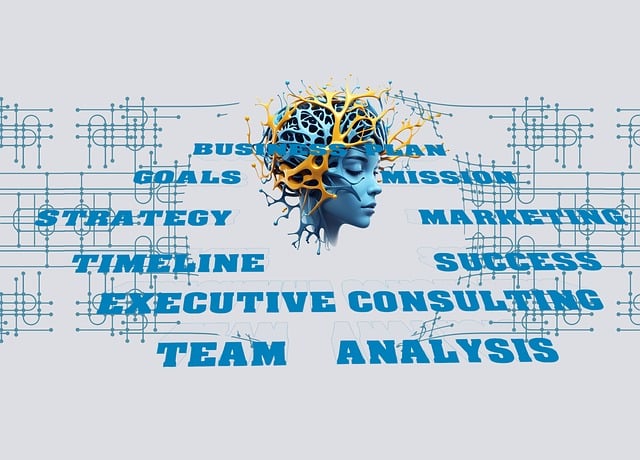The Rise of Trading AI Bots: Transforming the Future of Finance
Author: Jameson Richman Expert
Published On: 2024-08-30
Prepared by Jameson Richman and our team of experts with over a decade of experience in cryptocurrency and digital asset analysis. Learn more about us.
In an era characterized by rapid technological advancements, the financial sector is undergoing a remarkable transformation. One of the most significant developments has been the emergence and proliferation of trading AI bots. These sophisticated algorithms are reshaping the way we trade in the financial markets, offering new possibilities for both seasoned investors and newcomers. In this article, we will explore the mechanics, benefits, challenges, and future prospects of trading AI bots, along with my personal insights into this revolutionary trend.

Understanding Trading AI Bots
Trading AI bots are automated systems programmed to execute trades in financial markets based on predefined criteria. These bots leverage artificial intelligence, machine learning, and data analysis to make decisions in real-time, thereby potentially increasing profitability while reducing the emotional strain of trading.
How Trading AI Bots Work
At the core of trading AI bots lies complex algorithms that analyze vast amounts of data to identify trading opportunities. Here’s a breakdown of how they function:
- Data Collection: Bots collect data from various sources, including market news, financial reports, and historical price movements.
- Analysis: Using machine learning techniques, bots analyze this data to identify patterns and trends that can predict future price movements.
- Execution: Once a trading opportunity is identified, the bot executes the trade automatically, ensuring swift action that can capitalize on fleeting market conditions.
Types of Trading AI Bots
There are several types of trading AI bots, each designed for different trading strategies and goals:
- Trend-following bots: These bots identify and capitalize on upward or downward market trends.
- Arbitrage bots: Arbitrage bots exploit price differentials for the same asset across different markets.
- Market-making bots: These bots provide liquidity to the market by placing buy and sell orders, profiting from the spread.
- Portfolio management bots: These bots help in diversifying and managing an investment portfolio based on user-set parameters and risk tolerance.
Benefits of Trading AI Bots
The integration of AI bots into trading operations comes with a myriad of advantages:
1. Enhanced Speed and Efficiency
In financial trading, timing is everything. Trading AI bots can execute orders in milliseconds, far surpassing human capabilities. This rapid execution can be crucial in capitalizing on volatile market movements.
2. Reduced Emotional Bias
Human traders are often influenced by emotions, leading to impulsive decisions that can jeopardize investments. Trading bots operate on algorithms and data-driven strategies, devoid of emotional influence, potentially leading to more rational and effective trading choices.
3. 24/7 Market Monitoring
Unlike human traders, AI bots can operate around the clock, continually monitoring the market and executing trades at any hour. This constant vigilance can uncover opportunities that would otherwise be missed.
4. Backtesting and Strategy Optimization
Trading bots can backtest strategies on historical market data to evaluate their effectiveness. This ability allows traders to refine their strategies and improve their odds of success in live markets.
Challenges and Risks of Trading AI Bots
Despite the numerous advantages, trading AI bots are not without their challenges and risks:
1. Technical Issues
Trading bots are reliant on technology, which means they are susceptible to bugs, glitches, and downtime. A technical failure during critical market movements can lead to significant financial losses.
2. Overfitting and Strategy Failure
AI models can sometimes become overfitted, where they perform exceptionally well on historical data but fail to adapt to live market conditions. Traders must ensure their strategies maintain flexibility in changing environments.
3. Regulatory Concerns
The use of AI in trading raises regulatory questions about market manipulation and ethical trading practices. Regulators are beginning to take an interest in trading bots, and compliance can be a concern for users.
4. High Competition
The ease of access to trading bots means that many traders are vying for the same opportunities. This increasing competition can diminish the edge these bots once had, making it more challenging to achieve substantial profits.

Future Prospects for Trading AI Bots
As technology continues to advance, the future of trading AI bots looks promising. Here are some potential developments to watch:
1. Increased Adoption by Institutional Investors
Institutional investors are increasingly adopting AI-driven trading strategies. As these entities improve their technology and market understanding, it is likely that they will leverage trading bots for significant market advantage. In my opinion, this could further enhance market efficiency but also lead to greater volatility.
2. Evolution of Strategies
Trading bots will continue to evolve, becoming more sophisticated in their ability to analyze qualitative data such as news headlines and social media sentiment. This shift could transform trading from merely a quantitative analysis to a more holistic assessment of market conditions.
3. Enhanced Regulatory Frameworks
As trading bots proliferate, we can expect an evolving regulatory landscape. Regulatory bodies will likely establish clearer guidelines for the use of AI in trading to maintain market integrity. While such regulations are necessary, finding the balance between innovation and oversight will be crucial.
4. Integration with Other Technologies
The integration of AI bots with other technological advancements—such as blockchain and decentralized finance (DeFi)—could revolutionize trading platforms and strategies. This evolution could lead to unprecedented trading efficiencies, though it may also introduce new risks.
Conclusion
The rise of trading AI bots represents a paradigm shift in the financial markets, offering both opportunities and challenges. While these automated systems are poised to transform trading strategies, it is critical for users to remain vigilant and informed about the complexities involved. They hold the potential to democratize trading, enhance market efficiency, and usher in a new era of smart financial transactions.
As we move forward, the balance between automation and human insight will be pivotal in shaping the success of trading strategies. In my view, the future belongs to those who can effectively harness AI's power while retaining a comprehensive understanding of market dynamics. The integration of advanced technology into finance symbolizes a thrilling trajectory for traders worldwide, and as this trend unfolds, it will be interesting to see how market participants adapt to this new trading landscape.